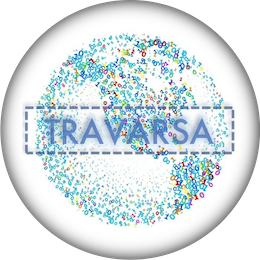Dive into AI excellence with TensorFlow, PyTorch, NLTK, and more! Uncover their powers....
Read MoreHow to start your career as a Front-End Web Developer ?

Embarking on a career in Front-End Web Development is akin to stepping onto a digital canvas where every line of code creates a visual masterpiece. The foundational stages involve mastering HTML to structure content and CSS to breathe life into designs. As we delve into the intricacies of JavaScript for interactivity and explore advanced frameworks like React or Vue, each step introduces new layers of proficiency.
Styling layouts, optimizing performance, and ensuring cross-browser compatibility become essential chapters in the Front-End developer’s journey.
Introduction:
In the digital era, where user experiences shape the online landscape, Front-End Web Development emerges as the cornerstone of interactive and visually engaging websites. As the gateway between users and technology, Front-End developers craft the aesthetic and functional aspects that captivate audiences and elevate online experiences. This guide unfolds a strategic roadmap for those aspiring to embark on a career in Front-End Web Development, offering a detailed step-by-step flowchart encompassing essential skills, tools, and strategies to navigate the dynamic world of web design and user interface development.
Career path for a Front-End Web Developer
A detailed step-by-step flowchart for starting a career in Front-End Web Development involves several stages. Here’s a comprehensive breakdown:
Step 1: Lay the Foundation
- HTML (Hypertext Markup Language):
Understand HTML Structure: Learn tags, elements, and document structure.
Semantic HTML: Grasp the importance of semantic markup. - CSS (Cascading Style Sheets):
Basic Styling: Learn to apply styles to HTML elements.
Responsive Design: Understand principles of responsive web design.
Step 2: Dive into Styling and Layouts
- CSS Layouts:
Box Model: Master the concept of margin, padding, and border.
Flexbox and Grid: Learn modern layout techniques. - CSS Preprocessors:
Sass or Less: Explore tools to enhance CSS with variables and functions.
Step 3: Enhance User Interactivity with JavaScript
- JavaScript Basics:
Variables, Functions, and Control Structures: Understand fundamental concepts.
DOM Manipulation: Learn to interact with the Document Object Model. - DOM Events and Event Handling:
Respond to User Actions: Implement interactivity with event listeners.
Step 4: Explore JavaScript Frameworks
- Introduction to Front-End Frameworks:
React, Vue, or Angular: Explore popular frameworks for building dynamic interfaces. - State Management:
Redux (for React) or Vuex (for Vue): Learn to manage state in large applications.
Step 5: Optimize for Performance and Accessibility
- Performance Optimization:
Minification and Compression: Optimize code for faster loading.
Lazy Loading: Improve page loading speed. - Accessibility Best Practices:
ARIA (Accessible Rich Internet Applications): Enhance accessibility for diverse users.
Step 6: Version Control and Collaboration
- Version Control Systems:
Git and GitHub: Learn version control for code collaboration. - Collaborative Tools:
Code Reviews: Participate in and conduct code reviews for continuous improvement.
Issue Tracking: Use tools like Jira or GitHub Issues for collaboration.
Step 7: Responsive Design and Cross-Browser Compatibility
- Media Queries:
Implement Responsive Design: Ensure websites work across devices.
Cross-Browser Testing: Verify compatibility with different browsers.
Step 8: Build and Automation Tools
- Build Tools:
Webpack, Grunt, or Gulp: Automate tasks for efficient development. - Package Managers:
NPM or Yarn: Manage project dependencies.
Step 9: Continuous Learning and Community Engagement
- Stay Updated:
Follow Latest Web Standards: Keep abreast of evolving web technologies.
Online Communities: Join forums and engage with the Front-End community. - Attend Conferences and Workshops:
Stay Informed: Participate in events for networking and learning.
Step 10: Develop a Portfolio and Online Presence
- Portfolio Development:
Showcase Projects: Display a variety of projects highlighting skills.
GitHub Profile: Maintain an active GitHub profile.
Step 11: Job Search and Career Transition Strategies
- Resume Building:
Highlight Skills and Projects: Tailor your resume for Front-End roles. - Job Applications and Interviews:
Prepare for Technical Interviews: Be ready for coding challenges.
Soft Skills: Develop effective communication and teamwork skills.
By following this detailed flowchart, aspiring Front-End Web Developers can systematically build a strong foundation and progress toward mastering the diverse skills required in this dynamic field. Continuous learning, hands-on projects, and engagement with the Front-End community are key elements for success in the ever-evolving landscape of web development.
Recommended certifications for a Front-End Web Developer
Here’s a list of recommended certifications for individuals pursuing a career in Front-End Web Development:
Foundational Certifications:
- FreeCodeCamp – Responsive Web Design Certification:
Covers HTML, CSS, Flexbox, and responsive design. - W3Schools – HTML Developer Certificate:
Validates knowledge in HTML and document structure. - W3Schools – CSS Developer Certificate:
Certifies proficiency in CSS for styling web pages.
JavaScript and Front-End Frameworks:
- JavaScript Developer Certificate (FreeCodeCamp):
Covers JavaScript basics, ES6, and DOM manipulation. - React Developer Certificate (FreeCodeCamp):
Validates proficiency in React.js and building React applications. - Vue.js Developer Certificate (Vue School):
Focuses on Vue.js for building interactive web interfaces.
Advanced Front-End Certifications:
- Front End Development Professional Certificate (edX/MIT):
Comprehensive program covering advanced Front-End concepts. - Web Accessibility Specialist (International Association of Accessibility Professionals):
Focuses on creating accessible web interfaces.
Build and Automation Tools:
- Webpack Fundamentals :
Certification covering Webpack for bundling and optimizing web assets.
Responsive Design and Cross-Browser Compatibility:
- Responsive Web Design Certification :
Focuses on creating responsive web pages. - Cross-Browser Compatibility Testing :
Course covering strategies for ensuring compatibility across browsers.
Version Control and Collaboration:
- Git and GitHub Certification (GitHub Learning Lab):
Practical certification for version control and collaboration.
Performance Optimization:
- Web Performance Optimization (Google Developers):
Certification on optimizing web performance for speed.
Web Design Principles:
- Web Design Certificate:
Covers design principles and user experience.
JavaScript Testing:
- JavaScript Testing (Udacity):
Certification covering testing principles for JavaScript.
Advanced JavaScript:
- JavaScript Algorithms and Data Structures (FreeCodeCamp):
Certification for mastering advanced JavaScript concepts.
Build Tools and Package Managers:
- NPM Fundamentals (Pluralsight):
Certification on using NPM for package management. - Advanced Gulp.js (Udemy):
Course covering advanced usage of Gulp.js for task automation.
These certifications cater to different aspects of Front-End Web Development, ensuring a well-rounded skill set for building modern and responsive web interfaces. Choose certifications based on your career goals, the tools and frameworks you plan to work with, and the specific areas of Front-End development that align with your interests.
Conclusion:
In conclusion, the journey into Front-End Web Development is a dynamic exploration of creativity, technology, and user-centric design. Armed with a diverse skill set ranging from the fundamental trio of HTML, CSS, and JavaScript to the sophisticated realms of frameworks and optimization techniques, you’re poised to sculpt the digital landscape. Continuous learning and active participation in the vibrant Front-End community are the compasses guiding you through evolving web standards. As you build your portfolio and engage in the collaborative world of code, remember that Front-End development is not just a career—it’s a passionate pursuit to bring innovation, accessibility, and seamless experiences to the fingertips of users worldwide. May your coding endeavors create digital experiences that captivate and inspire, leaving an indelible mark on the web.
Top 10 Cyber Security Threats Prevention strategies and solutions
Arm yourself with insights! Explore top 10 cyber threats and fortify your digital....
Read MoreAll About Keywords !
Unlock SEO success with diverse keywords. From short-tail to industry-specific, our guide empowers....
Read MorePredictive Marketing Analytics : Strategies & Benefits
Explore the future of marketing with predictive analytics. Unlock insights, optimize strategies, and....
Read MoreHow to start your career as a Software Testing Engineer ?
Unlock the path to becoming a Software Testing Engineer with our guide. From....
Read MoreUse of AI and ML in Advanced Marketing Strategies
Explore the dynamic synergy of AI & ML in advanced digital marketing. Uncover....
Read More





